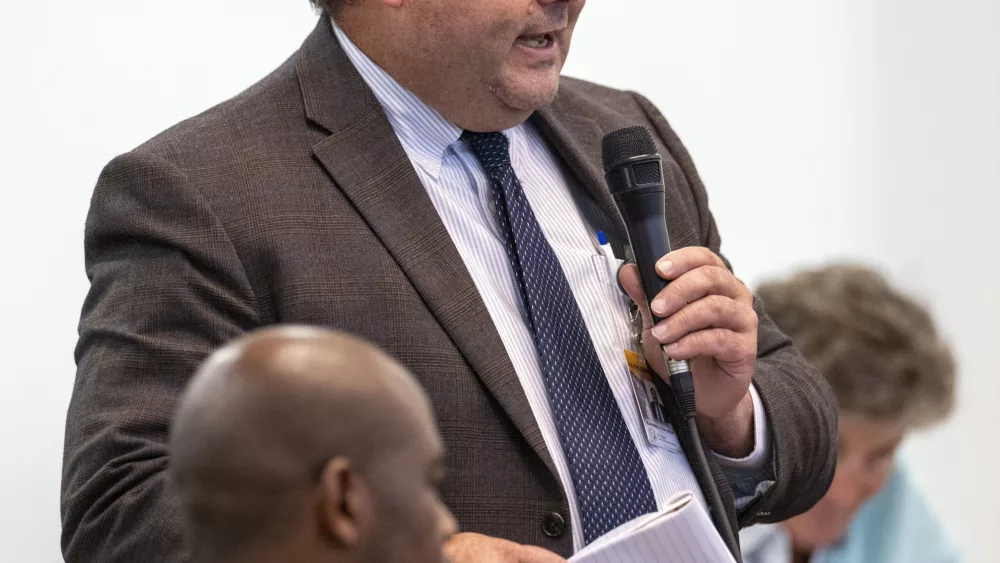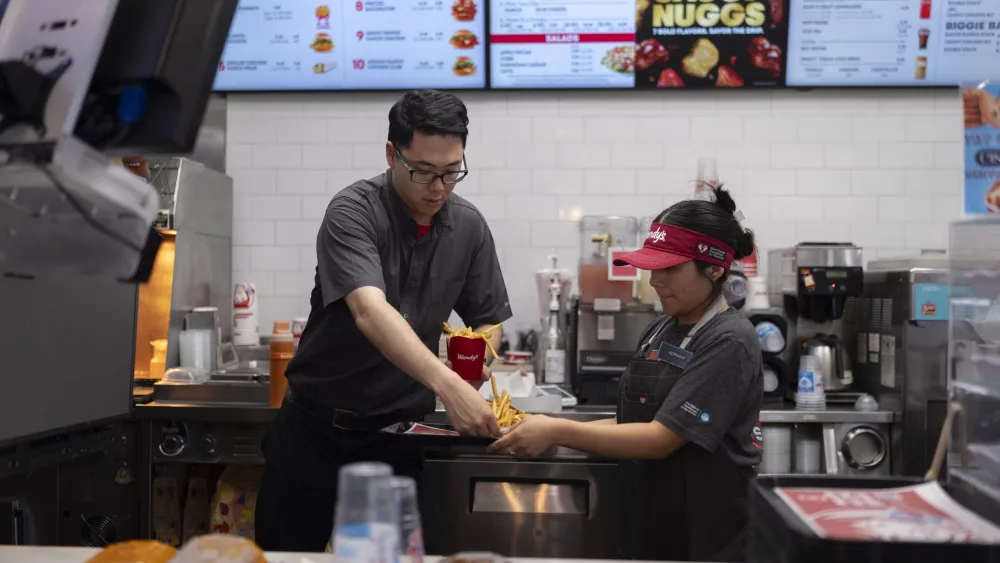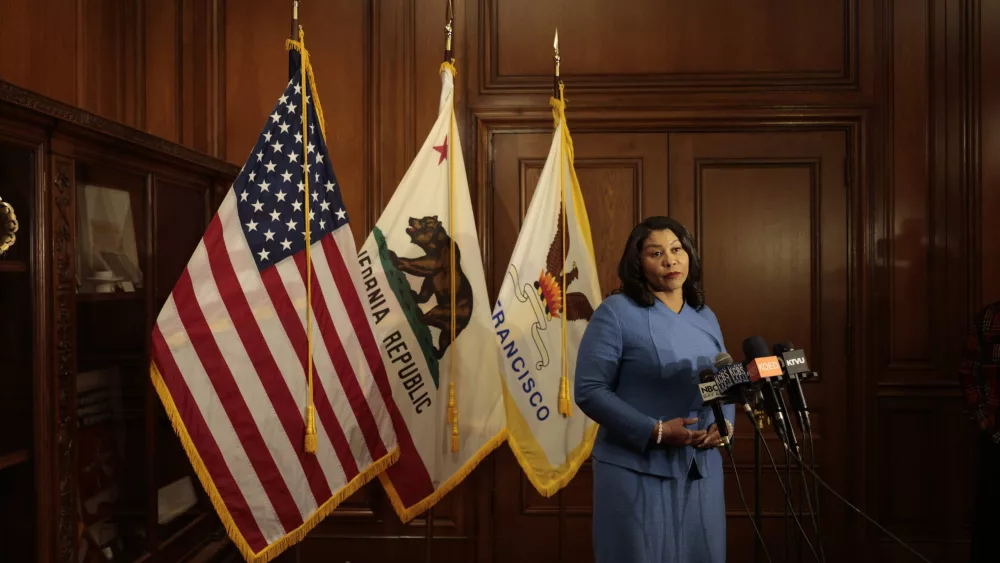STEUBENVILLE, Ohio (AP) — “Bye bye, Jesus!” a child called out as the riverboat chugged away from shore into the Ohio River, a solemn bell tolling amid the thrumming of an old-fashioned sternwheel.
Two Catholic bishops on board, representing dioceses on each side of the river, took turns holding aloft the guest of honor — the consecrated Eucharistic host, in which Catholics believe Jesus is truly present in the Communion bread.
Scores of devotees watched reverently from the shore on Sunday — nuns and families with clusters of young children — fingering rosaries, uttering prayers, singing quietly. Some knelt on the gravel surface.
The event culminated three days of devotions in this small Ohio city, launched by a procession through downtown streets on a sweltering Friday evening, where hundreds of devotees passed bars, shops, vacant storefronts and the curious stares of residents in folding chairs.
Among those in the procession were seminarians in black cassocks, nuns in habits, girls in First Communion dresses, and members of lay orders in traditional garb. One girl’s T-shirt proclaimed, “Get holy or die tryin’.”
It’s just a snapshot of a wider project. Catholic pilgrims are in the middle of a two-month journey on four routes across the United States. They’re planning to converge on Indianapolis in mid-July for a climactic stadium gathering called the National Eucharistic Congress, the first such event in more than 80 years.
Everywhere, the center of attention is the Eucharistic host, held in a golden vessel known as a monstrance.
“The pilgrimage is a really exciting opportunity for us to literally walk with Jesus, like the apostles did,” said Zoe Dongas, one of a small group of “perpetual” pilgrims traveling an entire route.
Starting in May in New Haven, Connecticut, her group has processed through cities, ridden by boat to the Statue of Liberty and trekked through rural Pennsylvania in a heat wave. The group will travel from West Virginia across Ohio to Indianapolis, meeting up with pilgrims who started from California, Texas and Minnesota.
Organizers are hoping that — as with the child on the riverbank — the enterprise reinforces the core Catholic belief that Jesus is truly present in the Eucharist, and not just symbolized by bread and wine, as many Protestants believe.
Some have questioned the need for the event, and the congress’s $14 million cost — saying belief in the Eucharist is stronger than feared, that the event is only appealing to those already drawn to traditional piety and that it’s partly the byproduct of a political debate.
But Bishop Mark Brennan of the Diocese of Wheeling-Charleston, West Virginia, said reinforcing Eucharistic faith is crucial.
“If that is weakened in our people, then they’ll be weakened in their response to Christ and to the service of God and neighbor that they’re supposed to offer,” Brennan said aboard the boat taking him and his counterpart from the Diocese of Steubenville downriver toward Wheeling.
If the scenes in Steubenville seemed like something out of another era, they are.
The last time a Eucharistic National Congress was held, it was in an era when urban Catholics thronged to massive devotional parades and stadium events. That kind of traditional piety began waning by mid-20th century.
But Steubenville, a Rust Belt city showing the wear of its post-industrial years, is a hub for some hoping to revive traditional piety. The region is home to a conservative Catholic university, a Catholic family camp and a cluster of religious orders.
This weekend, participants spoke of the Eucharist simply as Jesus.
The idea of taking Jesus out on a riverboat was natural in light of the assigned gospel reading at Sunday Mass, in which Jesus rides in a boat with his disciples and miraculously calms a storm, said Steubenville seminarian Sam Ivkovich.
“He preached from boats, so this seems fitting,” Ivkovich said on the wind-whipped Wellsburg Bridge, where he gathered with several devotees to kneel, sing and pray as the boat passed below.
The pilgrimages sprang from deliberations among U.S. bishops.
Their 2021 document, “The Mystery of the Eucharist in the Life of the Church,” arose amid debate over whether bishops should withhold Communion from Catholic politicians like President Joe Biden or Rep. Nancy Pelosi, Democrats who supported abortion rights. Following cautionary signals from the Vatican, the document ultimately did not directly address that question, though it called on Catholics to examine whether they align with church teachings.
Some bishops cited a 2019 survey that found most church members don’t believe Catholic doctrine on the Eucharist. Bishops devised a three-year focus on the doctrine, culminating in pilgrimages and the Indianapolis gathering.
Some researchers have cast doubt on the original survey’s phrasing.
A follow-up by the Center for Applied Research in the Apostolate in 2022 used multiple phrasings and found that 64% of Catholics expressed belief in Jesus’ presence in the Eucharist in at least one response. Virtually all Catholics who attend Mass weekly affirmed this belief, according to the Georgetown University-based center.
This raises the question of whether the pilgrimage and congress amount to “a solution in search of a problem,” said Steven Millies, professor of public theology at the Catholic Theological Union in Chicago. He wondered if bishops’ real worry is over Catholics’ “lost sense of difference” from a society they have assimilated into.
In the early to mid-20th century, when Catholics were defined by growing communities of European immigrants and their descendants, they gathered by the scores of thousands for Eucharistic and other traditional devotions at landmarks like Chicago’s Soldier Field, Louisville’s Churchill Downs and Pittsburgh’s Forbes Field.
“This was a way of announcing to the rest of the United States, ‘We are here, and we are here in large numbers,’” Millies said. The rituals, he added, served as a reminder that while Catholics had arrived as Americans, they were distinct from their neighbors.
These mass piety events began to wane by the 1950s. The reformist Second Vatican Council of the 1960s spawned simpler liturgies increasing lay involvement, though today some are working to revive older ways. Catholics are more diverse while also facing an increasingly secular culture.
“Catholics aren’t the same as we were 100 years ago,” Millies said. “The world has changed around us. Eucharistic piety is one form of devotion in the Catholic Church. There are many others. It doesn’t speak to everybody.”
He also questioned the event’s timing.
“I would find it very hard to accept this is a coincidence this is happening in an election year,” he said.
Pilgrimage participants, however, spoke in personal and spiritual terms.
Katherine Ball of St. Clairsville, Ohio, who joined Friday’s procession with fellow members of the Equestrian Order of the Holy Sepulchre of Jerusalem, dressed in its medieval black cape and veil, choked back tears as she spoke of how the presence of the Eucharist helped console her after losing her parents to cancer.
Weeks earlier, she said, she happened to drive alongside the well-marked van in which the perpetual pilgrims were traveling, with the host displayed in the monstrance. She stayed close to the van for some time, her spirits lifting as she recalled a saint’s writing that “Jesus never travels alone” but brings all of heaven into the Eucharist.
“I know that when I receive Holy Communion, I’m unified with my parents, and this is just a foretaste of heaven,” she said.
___
Associated Press religion coverage receives support through the AP’s collaboration with The Conversation US, with funding from Lilly Endowment Inc. The AP is solely responsible for this content.
Brought to you by www.srnnews.com








